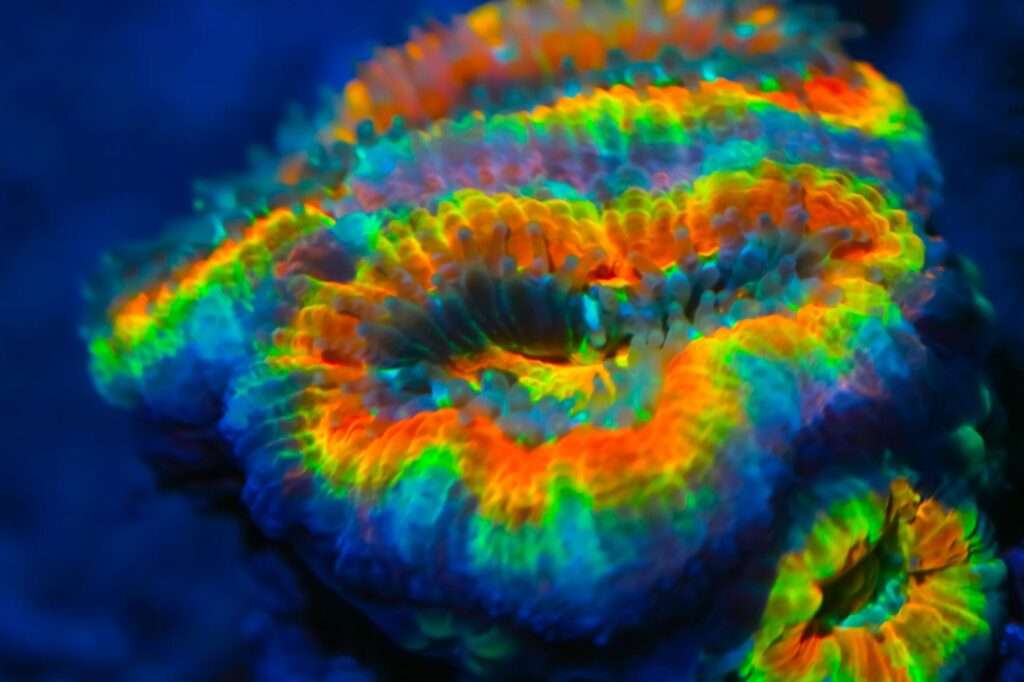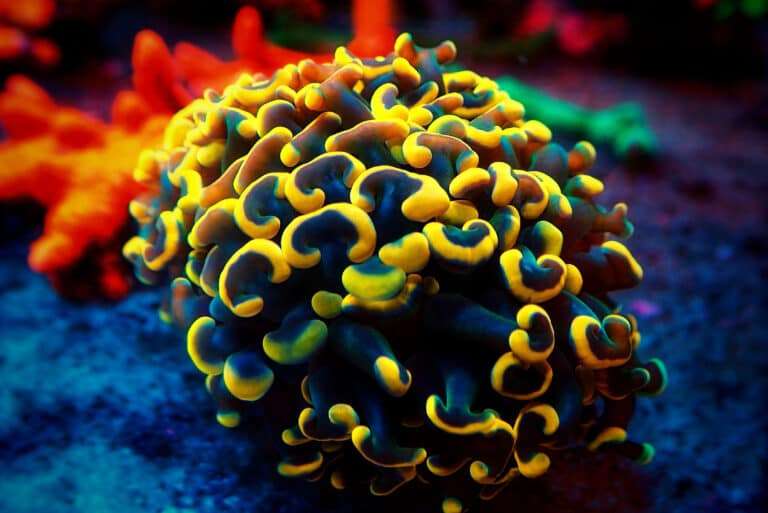
A bubble coral the aquarium trade frequently deals in Plerogyra sinuosa. According to the amount of light present, the Plerogyra spp., sometimes known as “Grape Corals,” will actually expand or deflate their water-filled vesicles (bubbles). Branching variations of the Plerogyra genus also exist. These corals might have little points on the ends of their bubbles.
Habitat
In 1848, Edwards and Haime described the Plerogyra genus. The Bubble Coral and the Octobubble Coral are the two species that are most well-known among the 6 nominal and 3 real species.
Dana first wrote about the Bubble Coral P. sinuosa in 1846. The Plerogyra genus lives in caves, crevices, and under overhangs in areas of calm water circulation on lower reef slopes. They do not seem to really favour any particular light. They can be found in shallow, brighter waters or low-light locations with virtually complete shade, but all of these habitats have murky water.
Morphology
Large water-filled “bubbles” are produced by the Octobubble Coral P. flexuosa and the Bubble Coral P. sinuosa, which both live in a single colony. This is an instantly identifiable display. The Bubble Branching Coral P. simplex resembles P. sinuosa in appearance, but P. sinuosa lacks separate branches. These little clusters are separated from one another within the colony by a significant amount of space, barely touching one another. P. discus has a similar flower-like appearance to the Fox Coral, Nemenzophyllia turbida, but each puffy vesicle is attached to a different branch.
Whether or not the Plerogyra genus branches, it possesses the typical light skeletal structure that is simple to cut or sever. Compared to the majority of symbiotic corals that have been investigated to date, they contain oval, water-filled vesicle bubbles that range in size from 1/2″ to 1″ (1-2.5 cm) with a higher density of zooxanthellae. The tiny polyps beneath the bubbles are protected by modified tentacles, not polyps.
The Plerogyra spp. have surfaces that are cream or tan with lighter striations, but if the light is too strong, they will turn brown. Between the bubbles are typically sharp, fine, thin “bone” fragments known as septa. In fact, the Plerogyra genus’ tissue will adhere to and crust over adjacent substrates. In the wild, some colonies can grow to a height of 3 feet (1 m), although the majority only reach 7.5″. (19 cm). Unknown is how long they will live.
In Captivity

Feeding
Plerogyra corals have evolved a number of feeding techniques in the wild. Many of its nutrients are obtained through a symbiotic interaction with a sea algae called zooxanthellae. They can also take in dissolved organic substances and planktonic creatures as well as food particles from the water column. Try to avoid giving the animal large bits of food because doing so makes it difficult for them to digest the food and frequently causes them to regurgitate late at night.
Social Interactions and Compatibility
Plerogyra corals should be kept separate from all other corals since they might be aggressive if they come in contact with them. Since it releases sweeper tentacles at night, it must be at least 6″ away. Their sweeper tentacles have a potent sting that they may punch at both humans and other corals. The toxin that leather corals release will harm them. When there is a significant population of leather corals around, they have been known to perish (Sinularia). Hermit crabs irritate the flesh of the Plerogyra genus, which is why it dislikes them.
Table





